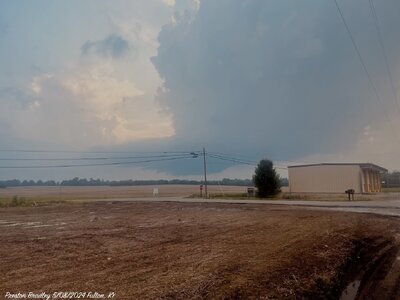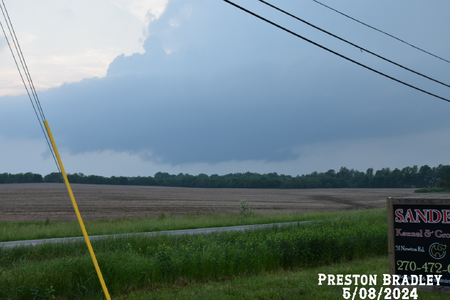ChristofferB
EF2
- Joined
- Aug 27, 2009
- Messages
- 197
While chasing there seems to be somewhat similar photo setups that occur from time to time. I am curious to how you set up your camera while chasing.
- If you shoot in Manual mode (which I assume), do you typically tend to keep the Aperture fixed and regulate with the Shutter speed.
- Do you typically use auto ISO or alternate that?
- How do you handle the "10 sec opportunity windows", when something appears and you know you have very limited time to photograph? Fully automatic.
- Do you have a standard Aperture that you tend to keep it on, unless the situation is very specific?
- How do you do to get the most contrast out of a dark (non back-lit) tornado? For example: - How can one practice storm photography when there is no storms?
Personally, I try to get out of the car with two cameras when there is a chance of tornadoes. On one, I keep some sort of telescope lens, either 70-300mm or 18-230mm on my Canon 760 (cropped sensor), on the other I have my old Canon 460 with a wide angle lens for storm structure. If we are close to the base, I sometimes use the wide angle as my primary lens and switch the 18-230 to my secondary camera. I usually keep my camera settings to Av-mode with auto-ISO unless there is plenty of time to play around with camera settings. I have messed up several times by forgetting my camera on a fixed ISO, fixed manual focus etc and haven't realized until too late which has ruined some great photo ops for me. I still don't feel comfortable enough to go full Manual, mainly for that reason and because it would take too much time for me to find the perfect setup when time is scarce.
What is your personal strategy for photographing storms?
- If you shoot in Manual mode (which I assume), do you typically tend to keep the Aperture fixed and regulate with the Shutter speed.
- Do you typically use auto ISO or alternate that?
- How do you handle the "10 sec opportunity windows", when something appears and you know you have very limited time to photograph? Fully automatic.
- Do you have a standard Aperture that you tend to keep it on, unless the situation is very specific?
- How do you do to get the most contrast out of a dark (non back-lit) tornado? For example: - How can one practice storm photography when there is no storms?
Personally, I try to get out of the car with two cameras when there is a chance of tornadoes. On one, I keep some sort of telescope lens, either 70-300mm or 18-230mm on my Canon 760 (cropped sensor), on the other I have my old Canon 460 with a wide angle lens for storm structure. If we are close to the base, I sometimes use the wide angle as my primary lens and switch the 18-230 to my secondary camera. I usually keep my camera settings to Av-mode with auto-ISO unless there is plenty of time to play around with camera settings. I have messed up several times by forgetting my camera on a fixed ISO, fixed manual focus etc and haven't realized until too late which has ruined some great photo ops for me. I still don't feel comfortable enough to go full Manual, mainly for that reason and because it would take too much time for me to find the perfect setup when time is scarce.
What is your personal strategy for photographing storms?


